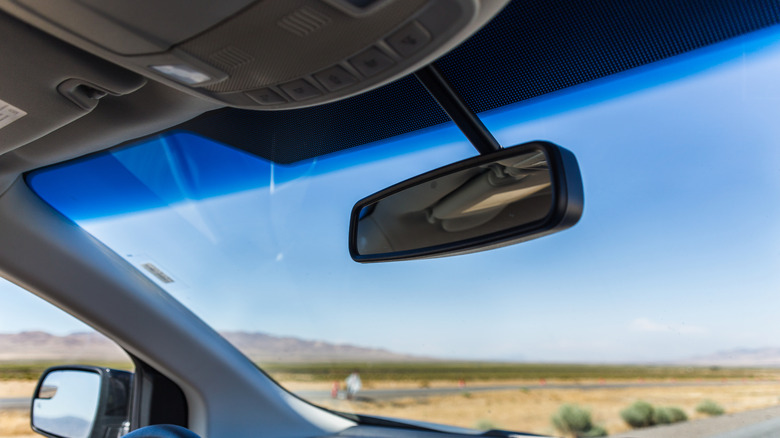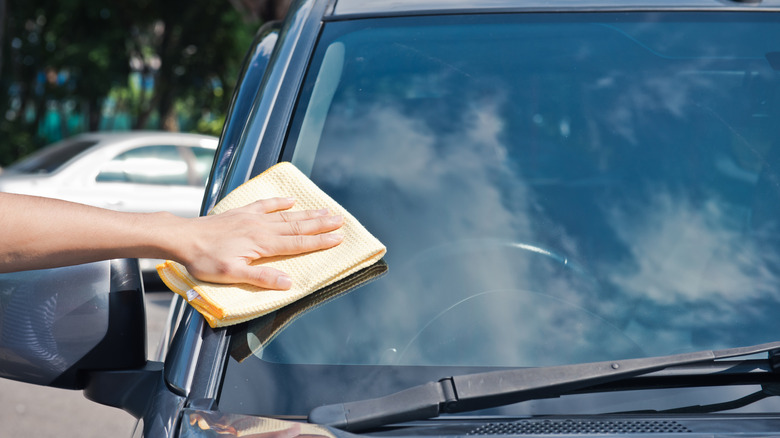Why Do Some Windshields Have A Blue Tint At The Top?
Have you ever noticed a blue tint at the top of the windshields of some older cars, particularly those manufactured between the mid-2000s and about 2012? It's not a fancy gimmick to make the car look premium or more expensive, although it was usually higher-end family cars or luxury cars that would typically have that feature back in the day. We're talking about the shade band or tint strip, a four- to six-inch-thick, bluish or darker section on the windshield glass that spans the entire windshield.
The shade band's purpose is quite simple, actually: It protects the driver's and passenger's eyes from harmful glare, particularly when driving during sunrise or sundown. Those four to six inches of tint serve as an added layer to block UV rays and potential glare. True, that's what the sun visors are for, but the shade band aims to block or reduce the potential glare from the area of the windshield not covered by the sun visors, particularly near the top of the glass.
Why do newer cars not have a shade band?
The reason why modern cars have ditched the shade band is the advancement of technology. Unlike the windshields of yore, newer cars have anti-glare and anti-UV coatings for the entire glass. There are many types of car windshields, and one of them is the solar-coated variety, also called infrared-reflective or UV-coated glass. As the name suggests, it's a type of windshield glass with infused layers of metal oxide particles that reflect the sun's rays and the heat that comes with them.
Of course, this special layer of protection renders the shade band obsolete, and that's why modern cars don't have that blue tint on top of the windshield anymore. Solar-coated windshields have a mildly bluish or purplish hue when exposed to sunlight, owing to their metal oxide coating.
You can also tint the windshield for more UV and glare protection, but pay attention to the AS1 line on the windshield if your car has one. The AS1 line sets the boundary for legal window tinting, which, like the shade band, is about four to six inches from the topmost part of the windshield glass. However, do note that mirrored tint on the front windshield is illegal and could hinder driving visibility at night, so stay away from that type if you're thinking about tinting your car's windshield.

